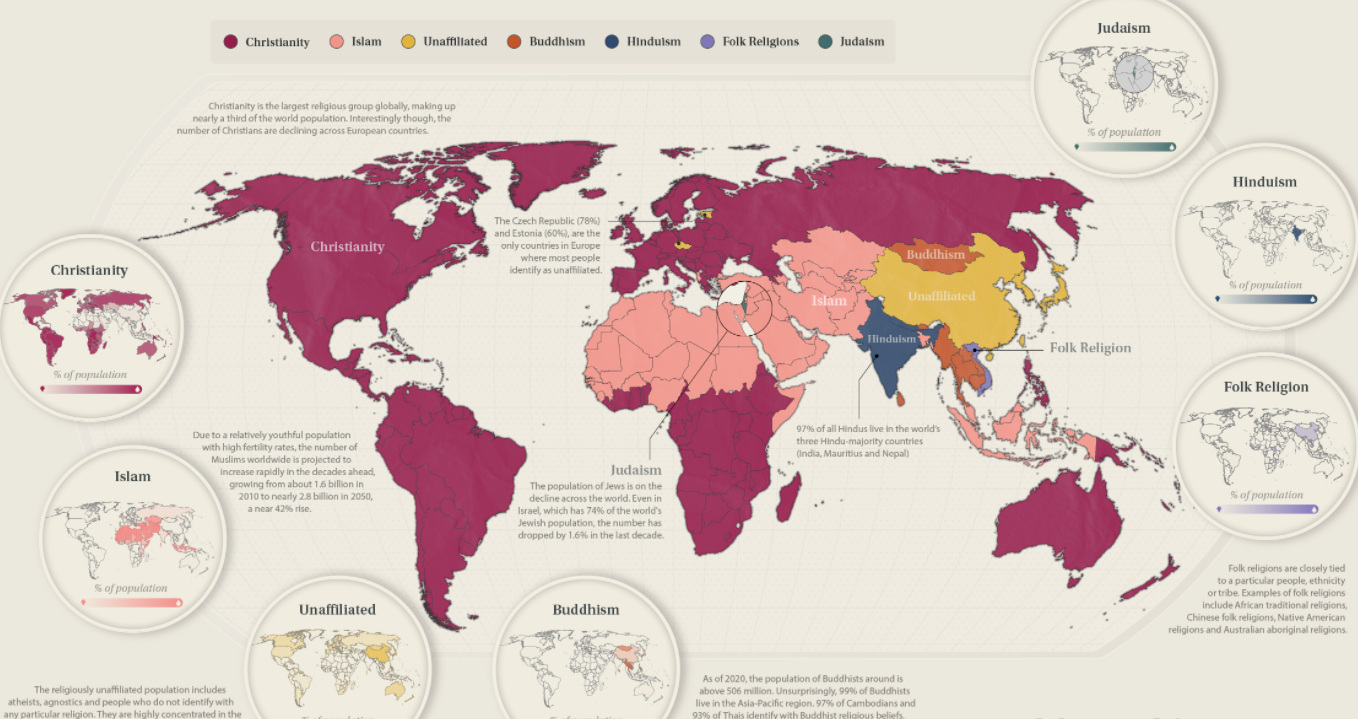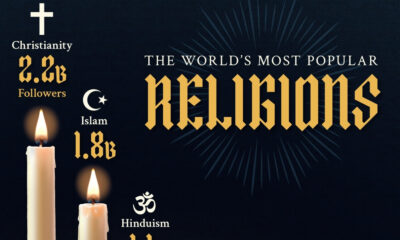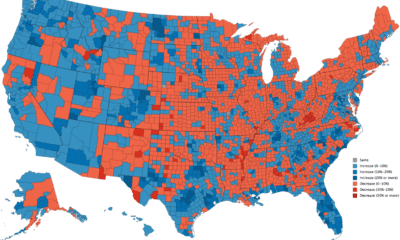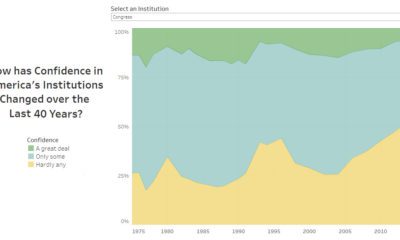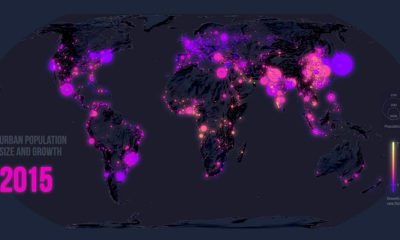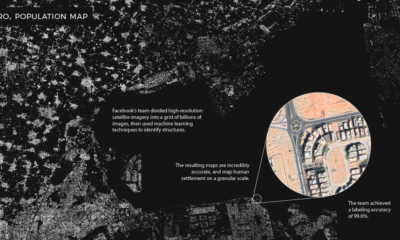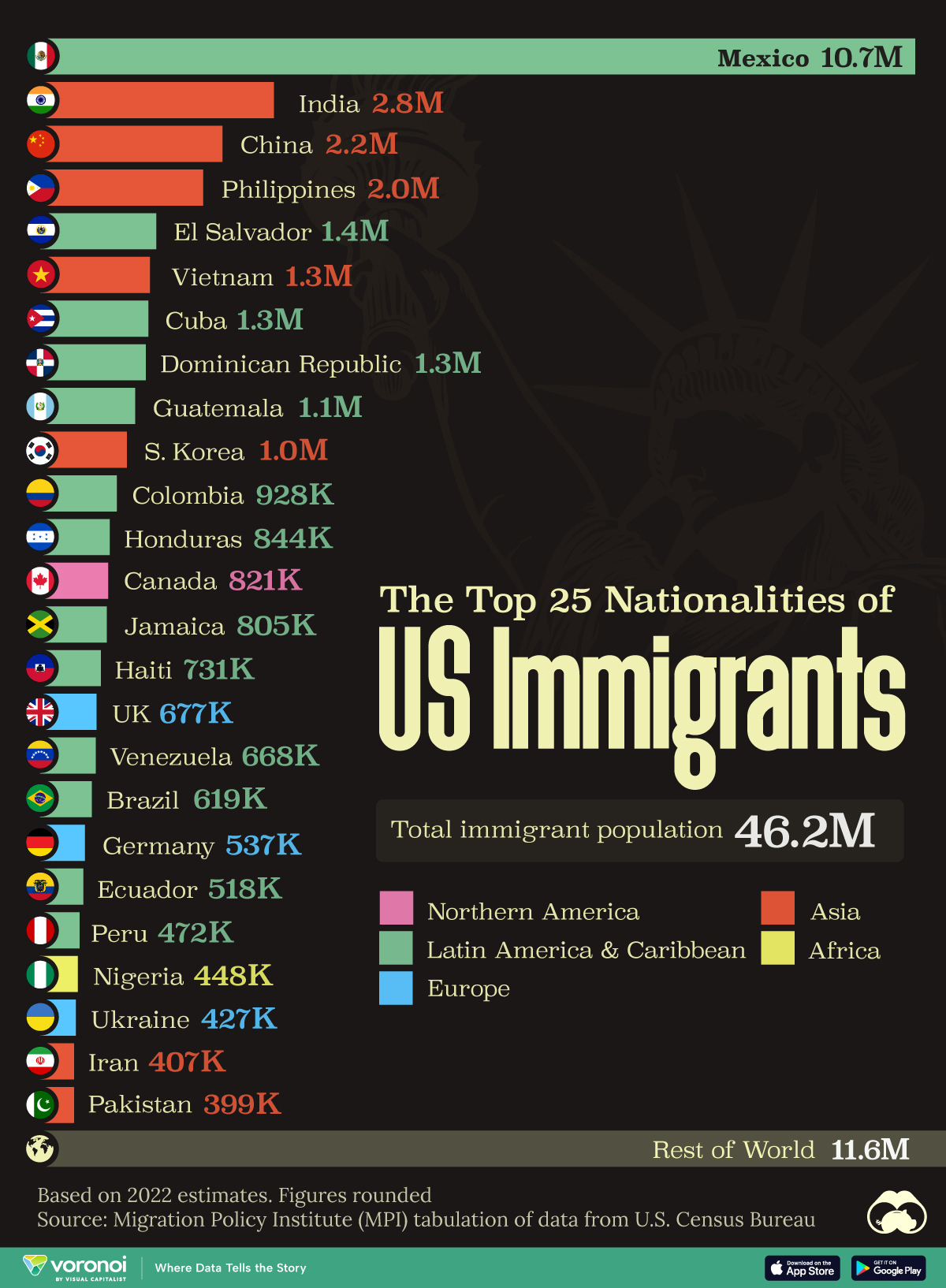Misc
Mapped: The World’s Major Religions
View the full-size infographic map
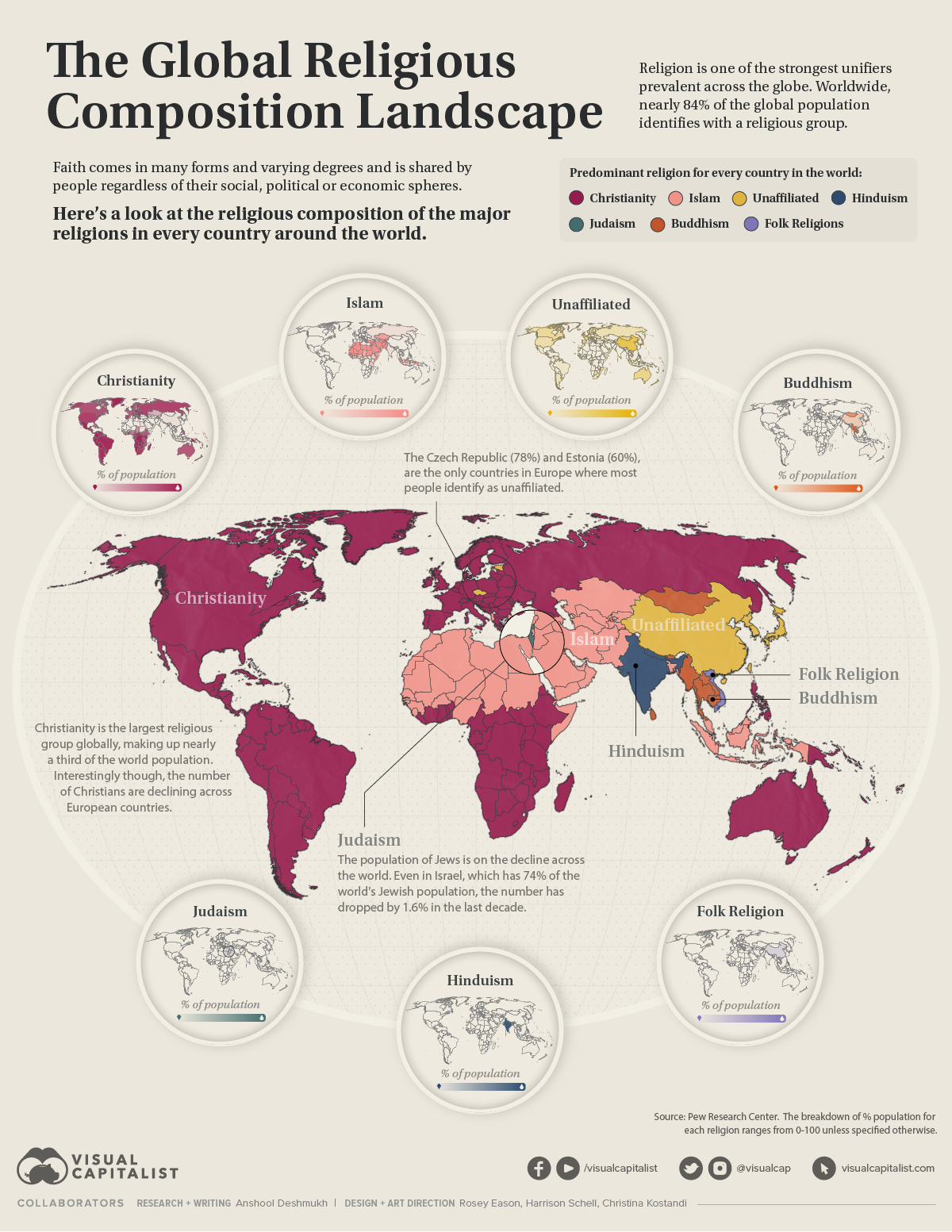
View the high-resolution version
Religious Composition of Countries
The world has become increasingly more secular in the last few decades. However, religion remains an integral part of many people’s lives, and 84% of the world’s population identifies with a religious group.
The religious profile of the world is rapidly changing, driven primarily by differences in fertility rates and the size of youth populations among the world’s major religions, as well as by people switching faiths.
With the help of data from Pew Research Center, we break down the religious composition of the major religions in countries worldwide.
Religious Makeup of the World by Major Religions
Determining the exact number of religions across the world is a daunting task. Many religions can be difficult to categorize or to tell apart for those not intimately familiar with their doctrine.
Pew Research Center organizes the world’s religions into seven major categories, which includes five major religions (Christianity, Islam, Buddhism, Hinduism, and Judaism), one category that broadly includes all Folk/Traditional religions, and an unaffiliated category.
Globally, Christianity has the largest following of these categories. Around 31% of the world’s population are Christians, closely followed by Muslims at 25%. Jews have the smallest population of major religions, with only 0.2% of the world identifying as Jewish.
Let’s take a look at the religious composition of the world when accounting for regions:
| Region | Christians | Muslims | Unaffiliated | Hindus | Jews | Buddhists | Folk |
|---|---|---|---|---|---|---|---|
| North America | 74.6% | 1.3% | 19.2% | 0.8% | 1.6% | 1.2% | 0.4% |
| Latin America-Caribbean | 89.7% | 0.1% | 8.0% | 0.1% | 0.1% | 0.1% | 1.8% |
| Europe | 72.2% | 6.8% | 20.0% | 0.2% | 0.2% | 0.2% | 0.1% |
| Middle East-North Africa | 3.6% | 93.1% | 0.6% | 0.6% | 1.6% | 0.2% | 0.3% |
| Sub-Saharan Africa | 62.0% | 31.4% | 3.0% | 0.2% | 0.1% | 0.1% | 3.2% |
| Asia-Pacific | 7.2% | 25.7% | 20.0% | 26.0% | 0.1% | 11.3% | 8.6% |
| World | 31.0% | 25.0% | 15.6% | 15.2% | 0.2% | 6.6% | 5.6% |
From Islam being the dominant religion in the Middle East to over 95% of Cambodians and Thais following Buddhism, here’s how prevalent every major religion in the world is.
Christianity
The world’s largest religion, Christianity, is practiced by about 2.4 billion people.
The country with the highest number of practicing Christians is the United States, with a Christian population of 253 million. Brazil and Mexico follow closely with 185 million and 118 million Christians, respectively.
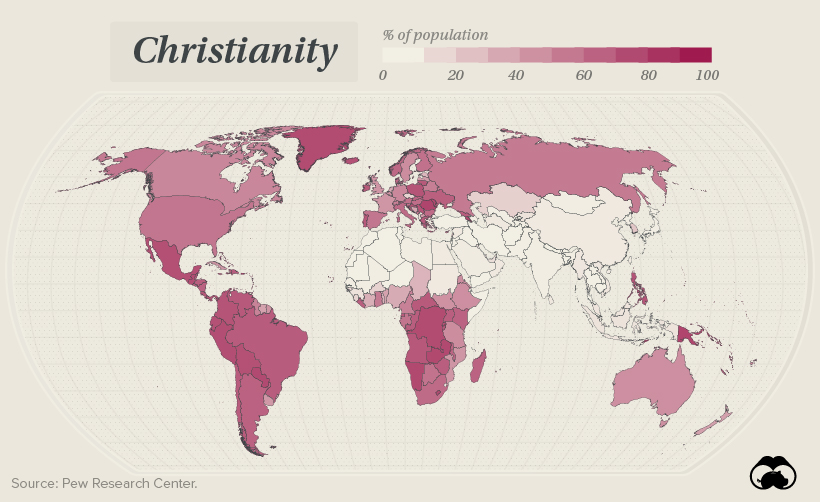
Christianity has historically spread around the globe and today it remains a geographically widespread religion. Over the past century, it has become less concentrated in Europe while becoming more evenly distributed throughout the Americas, sub-Saharan Africa, and the Asia-Pacific region.
Islam
Even though it’s the predominant religion of countries in the Middle East and Northern Africa, by sheer number, countries in Asia have the highest percentage of practicing Muslims in the world.
It may surprise you to know that 14.2% of Indians are Muslim. As a result, the country is home to one of the world’s largest Muslim populations, surpassed only by Indonesia.
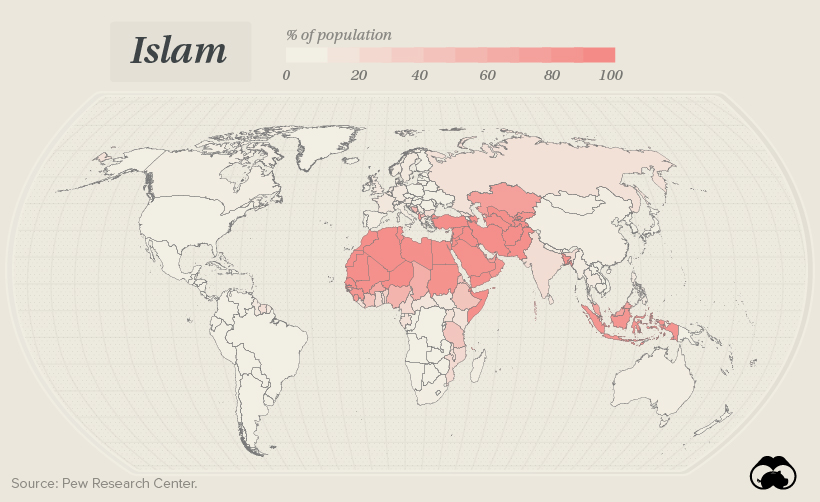
Islam is also the world’s fastest-growing major religion. The number of Muslims is expected to increase by 70%, from 1.8 billion in 2015 to nearly 3 billion in 2060. The fact that they have the youngest median age, at 24, also helps this population growth.
Judaism
While Jews historically have been found all around the globe, Judaism is highly geographically concentrated today. More than four-fifths of all Jews live in just two countries: the United States and Israel. Israel is the only country with a Jewish majority, with 76% of the population being practicing Jews.
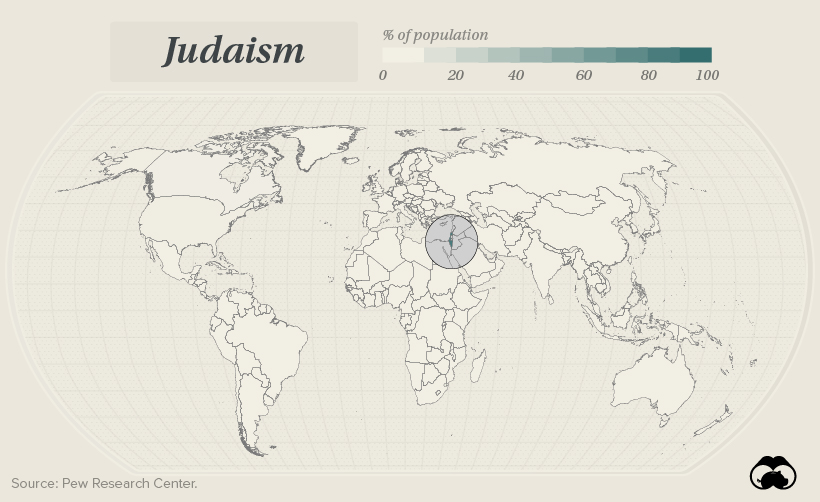
The largest remaining shares of the global Jewish population apart from the U.S. and Israel are in Canada (about 3% of the country’s population), France (2%), the United Kingdom (2%), Germany (2%), Russia (2%) and Argentina (between 1% and 2%).
Unaffiliated
The religiously unaffiliated population includes atheists, agnostics, and people who do not identify with any particular religion. 720 million of the Chinese population consider themselves religiously unaffiliated, while 78% of Czechs feel the same way.
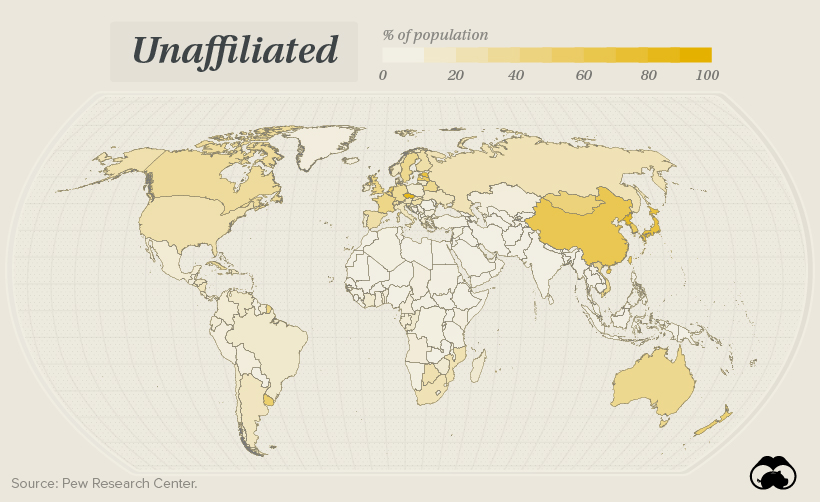
However, it is worth noting that many of the religiously unaffiliated hold some religious or spiritual beliefs. For example, surveys have found that faith in God or a higher power is shared by 7% of unaffiliated Chinese adults, 30% of unaffiliated French adults, and 68% of unaffiliated U.S. adults.
Hinduism
Hinduism is the third-largest religion worldwide, with approximately 1.2 billion Hindus in many countries. Interestingly, however, Hinduism is the dominant religion in only three countries, India with 79%, Nepal with 80%, and Mauritius with 48%.
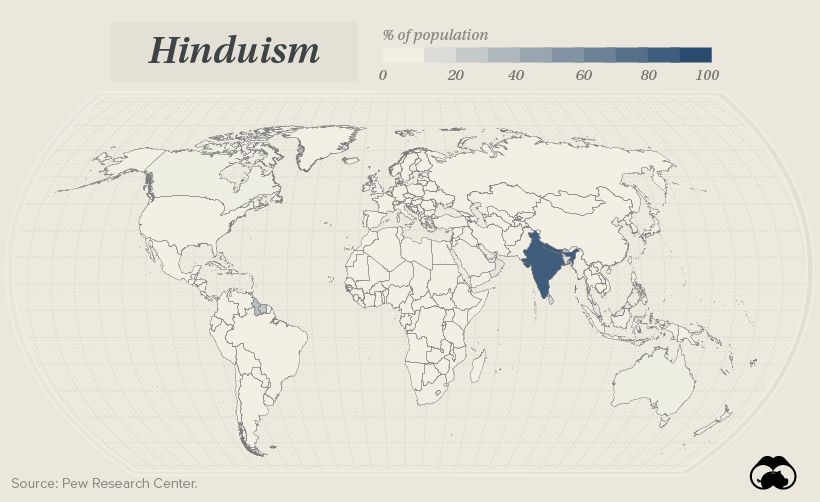
Although Hinduism is rarely a country’s primary religion, it still enjoys a global presence. Many regions around the world support significant populations of Hindus, including the Caribbean, Southeast Asia, North America, and South America.
Buddhism
According to estimates, half the world’s Buddhists live in China. Still, they make up only 18% of the country’s population. Most of the rest of the world’s Buddhists live in East and South Asia, including 13% in Thailand (where 93% of the population is Buddhist).
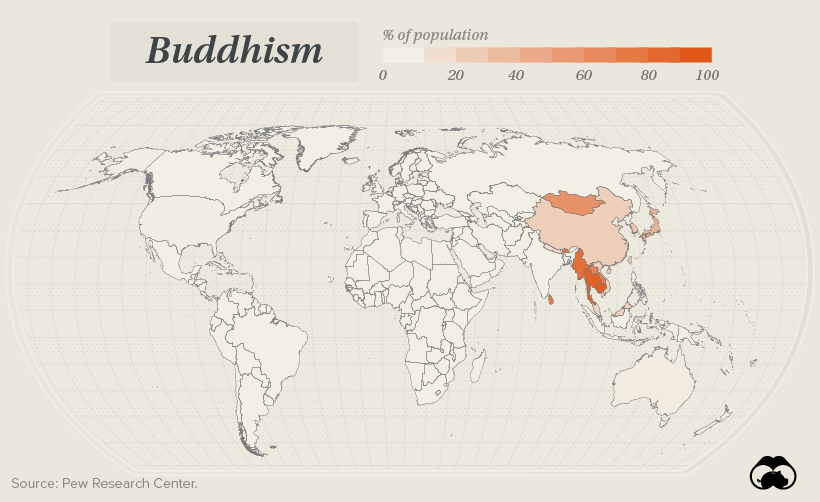
Buddhism in Asia is a matter of both identity and practice. Scholars and journalists have documented that many Asian countries may engage in Buddhist practices without considering themselves part of any organized religion.
Folk Religion
Folk religion is any ethnic or cultural religious practice that falls outside the doctrine of organized religion. Grounded on popular beliefs and sometimes called popular or vernacular religion, the term refers to how people experience and practice religion in their daily lives.
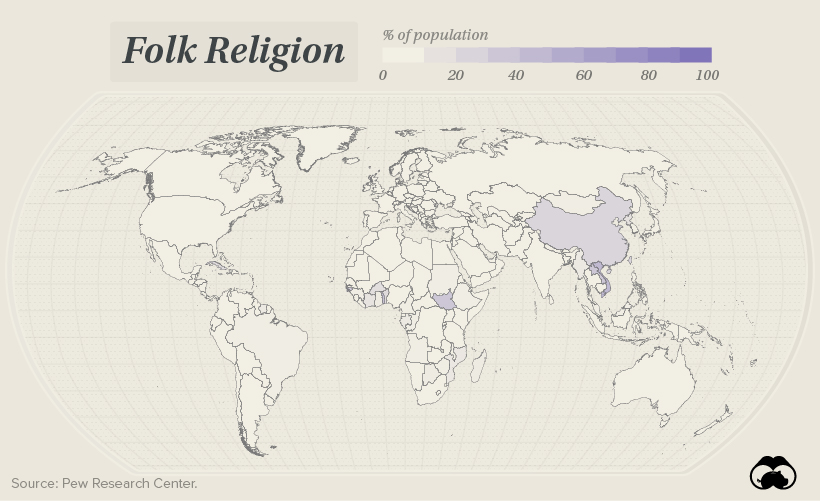
As of 2020, an estimated 429 million people, about 6% of the world’s total population, were adherents of folk or traditional religions. Some notable folk religions include African traditional religions, Chinese folk religions, Native American religions, and Australian aboriginal religions.
Misc
The Top 25 Nationalities of U.S. Immigrants
Mexico is the largest source of immigrants to the U.S., with almost 11 million immigrants.
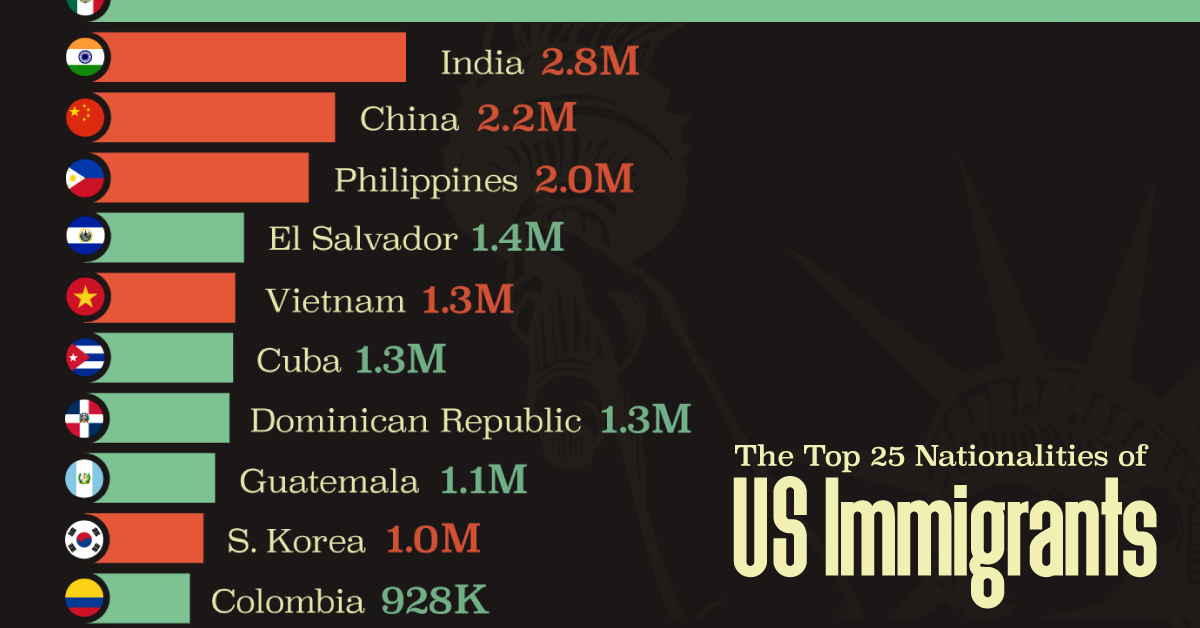
The Top 25 Nationalities of U.S. Immigrants
This was originally posted on our Voronoi app. Download the app for free on iOS or Android and discover incredible data-driven charts from a variety of trusted sources.
The United States is home to more than 46 million immigrants, constituting approximately 14% of its total population.
This graphic displays the top 25 countries of origin for U.S. immigrants, based on 2022 estimates. The data is sourced from the Migration Policy Institute (MPI), which analyzed information from the U.S. Census Bureau’s 2022 American Community Survey.
In this context, “immigrants” refer to individuals residing in the United States who were not U.S. citizens at birth.
Mexico Emerges as a Leading Source of Immigration
Mexico stands out as the largest contributor to U.S. immigration due to its geographical proximity and historical ties.
Various economic factors, including wage disparities and employment opportunities, motivate many Mexicans to seek better prospects north of the border.
| Country | Region | # of Immigrants |
|---|---|---|
| 🇲🇽 Mexico | Latin America & Caribbean | 10,678,502 |
| 🇮🇳 India | Asia | 2,839,618 |
| 🇨🇳 China | Asia | 2,217,894 |
| 🇵🇭 Philippines | Asia | 1,982,333 |
| 🇸🇻 El Salvador | Latin America & Caribbean | 1,407,622 |
| 🇻🇳 Vietnam | Asia | 1,331,192 |
| 🇨🇺 Cuba | Latin America & Caribbean | 1,312,510 |
| 🇩🇴 Dominican Republic | Latin America & Caribbean | 1,279,900 |
| 🇬🇹 Guatemala | Latin America & Caribbean | 1,148,543 |
| 🇰🇷 Korea | Asia | 1,045,100 |
| 🇨🇴 Colombia | Latin America & Caribbean | 928,053 |
| 🇭🇳 Honduras | Latin America & Caribbean | 843,774 |
| 🇨🇦 Canada | Northern America | 821,322 |
| 🇯🇲 Jamaica | Latin America & Caribbean | 804,775 |
| 🇭🇹 Haiti | Latin America & Caribbean | 730,780 |
| 🇬🇧 United Kingdom | Europe | 676,652 |
| 🇻🇪 Venezuela | Latin America & Caribbean | 667,664 |
| 🇧🇷 Brazil | Latin America & Caribbean | 618,525 |
| 🇩🇪 Germany | Europe | 537,484 |
| 🇪🇨 Ecuador | Latin America & Caribbean | 518,287 |
| 🇵🇪 Peru | Latin America & Caribbean | 471,988 |
| 🇳🇬 Nigeria | Africa | 448,405 |
| 🇺🇦 Ukraine | Europe | 427,163 |
| 🇮🇷 Iran | Middle East | 407,283 |
| 🇵🇰 Pakistan | Asia | 399,086 |
| Rest of World | 11,637,634 | |
| Total | 46,182,089 |
Mexicans are followed in this ranking by Indians, Chinese, and Filipinos, though most immigrants on this list come from countries in the Latin American and Caribbean region.
On the other hand, only three European countries are among the top sources of U.S. immigrants: the UK, Germany, and Ukraine.
Immigration continues to be a significant factor contributing to the overall growth of the U.S. population. Overall population growth has decelerated over the past decade primarily due to declining birth rates.
Between 2021 and 2022, the increase in the immigrant population accounted for 65% of the total population growth in the U.S., representing 912,000 individuals out of nearly 1.4 million.
If you enjoyed this post, be sure to check out Visualized: Why Do People Immigrate to the U.S.? This visualization shows the different reasons cited by new arrivals to America in 2021.
-

 Personal Finance1 week ago
Personal Finance1 week agoVisualizing the Tax Burden of Every U.S. State
-

 Misc6 days ago
Misc6 days agoVisualized: Aircraft Carriers by Country
-

 Culture6 days ago
Culture6 days agoHow Popular Snack Brand Logos Have Changed
-

 Mining1 week ago
Mining1 week agoVisualizing Copper Production by Country in 2023
-

 Misc1 week ago
Misc1 week agoCharted: How Americans Feel About Federal Government Agencies
-

 Healthcare1 week ago
Healthcare1 week agoWhich Countries Have the Highest Infant Mortality Rates?
-

 Demographics1 week ago
Demographics1 week agoMapped: U.S. Immigrants by Region
-

 Maps1 week ago
Maps1 week agoMapped: Southeast Asia’s GDP Per Capita, by Country




